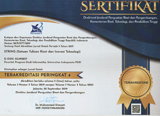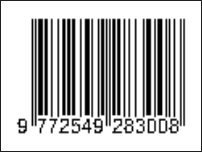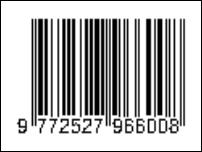Analisis Produktivitas Pekerja Menggunakan Metode Work Sampling di Toko XYZ
(1) Universitas Singaperbangsa Karawang
(2) Universitas Singaperbangsa Karawang
(3) Universitas Singaperbangsa Karawang
(*) Corresponding Author
Abstract
The current industrial era is getting stricter in terms of job search criteria, so workers must improve their consistency and ability to understand the work system well. The work system is a combination of work elements that interact and are integrated effectively and productively to achieve the desired goals. Toko XYZ is a micro, small and medium enterprise (MSME) which is engaged in selling basic commodities. The problem that occurs in the shop is that it has not been able to determine the standard time, standard production, and the calculation of the workload experienced by workers. The objectives to be achieved in this study are to determine the level of productivity of shift 1 workers by measuring work sampling, calculating the standard time experienced by the three workers, and determining the number of sales in shift 1. The results obtained from measurements using the work sampling method are Worker 1 gains time more productive with a value of 8.76 hours compared to Worker 2 and Worker 3 with 8.72 hours and 8.09 hours, respectively. The worker with the highest workload value is worker 3 with a value of 88.09%. Suggestions and solutions that can be given are by motivating workers to be more active at work and increasing other supporting facilities, so as to increase worker productivity and reduce non-productive activities of workers.
Keywords
Full Text:
PDFReferences
A. Y. M. Rijal and H. K. Nurtjahyo, “Perbaikan Waktu Proses Kerja Mesin Drill Melalui Perancangan Alat Bantu (Studi Kasus di Cahaya Logam Utama),” J. Baut dan Manufaktur, vol. 03, no. 02, pp. 24–30, 2021.
S. N. N. Nasrudin Inayati, “Perbaikan Sistem Kerja Dalam Meningkatkan Produktifitas dan Efektifitas Waktu Kerja Produksi Bagi Pengusaha Kerupuk Kulit Dorokdok (Umkm) di Sukarenggang Kabupaten Garut,” vol. 1, no. 2, 2019.
I. Mindhayani and H. Purnomo, “Perbaikan Sistem Kerja Untuk Meningkatkan Produktivitas Karyawan,” J. PASTI, vol. 10, no. 1, pp. 98–107, 2016.
A. Prayoga, “Produktivitas dan Efisiensi Teknis Usahatani Padi Organik Lahan Sawah,” J. Agro Ekon., vol. 28, no. 1, p. 1, 2016, doi: 10.21082/jae.v28n1.2010.1-19.
G. Yanti, P. Studi, T. Sipil, U. Lancang, L. U. Rate, and W. Sampling, “Produktivitas Tenaga Kerja dengan Metode Work Sampling Proyek Perumahan di Kota Pekanbaru,” vol. 3, no. 2, pp. 100–106, 2017.
D. Diniaty and R. Febriadi, “Analisis Beban Kerja dengan Menggunakan Metode Work Sampling,” J. Tek. Ind., vol. 1, no. 2, pp. 60–69, 2015.
J. Jono, “Pengukuran Beban Kerja Tenaga Kerja dengan Metode Work Sampling (Studi Kasus di PT. XY Yogyakarta),” Spektrum Ind., vol. 13, no. 2, pp. 205–216, 2015, doi: 10.12928/si.v13i2.2697.
M. Taufan, “Penentuan Jumlah Tenaga Kerja yang Optimal dengan Metode Work Sampling Di Ikm Griya Mank Gudo Jombang,” J. Valtech, vol. 01, no. 01, pp. 31–35, 2018.
I. Z. Sutalaksana, R. Anggawisastra, and J. H. Tjakraatmadja, Teknik Perancangan Sistem Kerja, Edisi Kedu. Bandung: Penerbit ITB Bandung, 2006.
T. Rachman, “Penggunaan Metode Work Sampling untuk Menghitung Waktu Baku dan Kapasitas Produksi Karungan Soap Chip di PT. SA,” J. Inovisi, vol. 9, no. 1, pp. 48–60, 2013.
A. Lestari, H. Tannady, and F. Nurprihatin, “Analisis Produktivitas Kasir Guna Menentukan Beban Kerja Menggunakan Work Sampling pada Gerai Makanan Cepat Saji,” Pros. Semin. Rekayasa Teknol., pp. 578–587, 2018.
L. Herdiman, T. Rochman, and B. Susilo, “Perancangan Ulang Alat Perajangan Daun Tembakau Untuk Mengurangi Keluhan Pada Pekerja,” vol. 12, no. 2, pp. 105–114, 2013
DOI: http://dx.doi.org/10.30998/string.v6i3.12721
Refbacks
- There are currently no refbacks.
Copyright (c) 2022 Putri Amalia Muntaha, Dene Herwanto, Mohammad Rifany Asyidikiah

This work is licensed under a Creative Commons Attribution 4.0 International License.
STRING (Satuan Tulisan Riset dan Inovasi Teknologi) indexed by:

Ciptaan disebarluaskan di bawah Lisensi Creative Commons Atribusi 4.0 Internasional.
View My Stats


 Sertifikat Akreditasi
Sertifikat Akreditasi
















